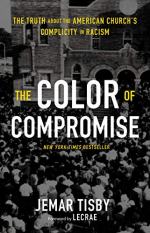
|
| Name: _________________________ | Period: ___________________ |
This test consists of 5 multiple choice questions, 5 short answer questions, and 10 short essay questions.
Multiple Choice Questions
1. What religious beliefs did enslaved Blacks hold upon their arrival in North America?
(a) They were primarily Jewish and Islamic.
(b) They had already converted to the Christian faith.
(c) They had no religious beliefs of their own.
(d) They practiced indigenous religions native to Africa.
2. Why was the antislavery clause removed from the Declaration of Independence?
(a) States that profited from the slave trade objected to its inclusion.
(b) States that outlawed slavery launched a letter-writing campaign.
(c) States that supported the slave trade won a Congressional vote.
(d) States that opposed the slave trade offended the Founding Fathers.
3. Which Black preacher helped found the African Methodist Episcopal Church?
(a) Jesse Jackson.
(b) Richard Allen.
(c) Richard R. Jones.
(d) Martin Luther King, Jr.
4. According to Tisby, during which period of American history did race NOT determine a person's station in society?
(a) 1900-2000.
(b) 1600-1800.
(c) 1500-1700.
(d) 1800-1900.
5. Which church leader helped found The Society for the Propagation of the Gospel in Foreign Parts (SPG)?
(a) Francis Le Jau.
(b) George Whitefield.
(c) Jonathan Edwards.
(d) Thomas Bray.
Short Answer Questions
1. Who was John Newton?
2. In the 1800s, the global demand for which product helped fuel the north American slave trade?
3. According to Tisby, what attracted most Black people to Christianity during the Colonial era?
4. Which white man married Metoaka, also known as Pocahontas?
5. Which of the following is NOT a social issue the Benevolent Empire sought to address?
Short Essay Questions
1. What was the impact of the Missouri Compromise?
2. What was the concept of "hereditary heathenism," outlined by Tisby in Chapter 2?
3. What is the monogenesis theory of humankind?
4. Concerning slavery, what was meant by the term "natural increase" (33)?
5. What was the Fugitive Slave Clause?
6. Many white Christians believe that individual conversation and a spiritual awakening will naturally lead to racial equality. What is Tisby's perspective?
7. What was the impact of Nat Turner's rebellion?
8. What decisions were made at the Baptist General Committee of Virginia in 1790?
9. Why did the Episcopalian diocese originally refuse to admit St. Philip's church?
10. What was the Three-Fifths Compromise?
|
This section contains 606 words (approx. 3 pages at 300 words per page) |

|




